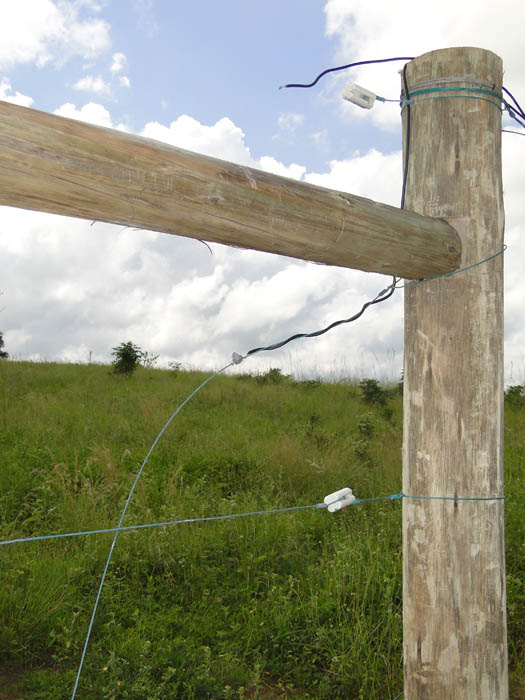THE CHALLENGES
The project faces many challenges that hinder the sustainability and full development of Mwaluganje Elephant Sanctuary as a conservation and Eco-Tourism enterprise.
Limited Financial Resources
- The Sanctuary has very limited resources to maintain such a large area.
- As a new Eco-Tourism enterprise, the Sanctuary is not generating enough money to distribute to the community to compensate them for the loss of their land.
- Funds are required to purchase and maintain a vehicle and hire well trained manpower and pay them accordingly. It is a dangerous job working in the Sanctuary, and without a vehicle to take solace if an elephant appears, the job can become life threatening. One fence maintenance worker walks 15kms every day in and out of the Sanctuary to repair the fence. Many a precarious meeting has taken place between workers and elephants!
-
 An electric fence is an expense that Mwaluganje cannot afford to erect nor maintain. The existing solar powered fence is only operational in the afternoon and during the night. It is reliant upon sunny weather to charge the solenoids, and if the weather has been cloudy, the fence is not operational for that evening. Elephants are intelligent and very resourceful, and discover many ways to pass through the fence. Due to their strength, elephants can topple trees with a few thrusts of their shoulder. Once the tree is felled, they pick it up in their trunk and place it on a section of the fence that is furthest from the support posts. By placing their foot on the post and apply what looks like gentle pressure, the post breaks the wiring. More recently, elephants have discovered another way to break through the fence. This involves a nominated herd member placing their foot on the support post in between the lower and upper wires, and placing gentle pressure until the post leans or breaks and the wires snap. Either they or another member of the herd positions themselves sideways next to the post and pushes the post to the ground. The post is held in place as the other members of the herd step over it. Fence breaks occur daily in the section of fence that runs closest to the Dimbula forest where a migration path has been established over time. Since this migration path had not been evident when the Mwaluganje Elephant Sanctuary was created, homes were relocated into this area. Community members report elephants either stopping to eat crops in the Shambras (farms) or as they simply pas through. In the morning, when the elephants cross back into the Sanctuary, they have been known to disrupt children going to school. If the children cannot pass by the elephants, they do not go to school that day.
An electric fence is an expense that Mwaluganje cannot afford to erect nor maintain. The existing solar powered fence is only operational in the afternoon and during the night. It is reliant upon sunny weather to charge the solenoids, and if the weather has been cloudy, the fence is not operational for that evening. Elephants are intelligent and very resourceful, and discover many ways to pass through the fence. Due to their strength, elephants can topple trees with a few thrusts of their shoulder. Once the tree is felled, they pick it up in their trunk and place it on a section of the fence that is furthest from the support posts. By placing their foot on the post and apply what looks like gentle pressure, the post breaks the wiring. More recently, elephants have discovered another way to break through the fence. This involves a nominated herd member placing their foot on the support post in between the lower and upper wires, and placing gentle pressure until the post leans or breaks and the wires snap. Either they or another member of the herd positions themselves sideways next to the post and pushes the post to the ground. The post is held in place as the other members of the herd step over it. Fence breaks occur daily in the section of fence that runs closest to the Dimbula forest where a migration path has been established over time. Since this migration path had not been evident when the Mwaluganje Elephant Sanctuary was created, homes were relocated into this area. Community members report elephants either stopping to eat crops in the Shambras (farms) or as they simply pas through. In the morning, when the elephants cross back into the Sanctuary, they have been known to disrupt children going to school. If the children cannot pass by the elephants, they do not go to school that day.
- The Dung Paper Project requires equipment to refine processes so that the paper products can be sold in various markets, locally and internationally.
- In a study conducted by Oceans2Earth Foundation it was established that 73% of Mwaluganje community members living closest to the Sanctuary fence were entering the Sanctuary on a regular basis for various purposes. The most prominent reasons included firewood collection, timber for fence posts, bathing, grazing, as a shortcut for access to Kwale town and to visit cultural and sacred places. Given the dangerous nature of elephants when they encounter people in their habitat, these meetings have not always ended well and many deaths have occurred as a result.








